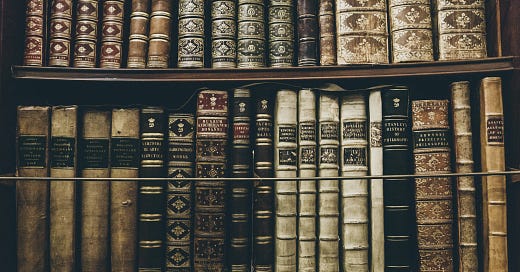Why This U.S. State is the Ideal Climatic Ecosystem for Preserving Books.
Unpacking the Benefits of Dry Air and High Altitudes
Unsplash Photo Credit: Thomas Kelley
The art of preserving books has significantly evolved over the centuries, from ancient scrolls stored in clay jars to modern methods that protect cherished volumes from the ravages of time. As we delve into the history and current practices of book preservation, one interesting aspect I discovered is the role of environmental factors, such as those found in Colorado, in maintaining the integrity of these cultural treasures.
Historical Evolution of Book Preservation
Historically, book preservation was primarily concerned with protecting manuscripts from physical and environmental damage. In ancient times, scrolls were often kept in protective casings and stored in caves or stone buildings that naturally maintained a stable temperature and low humidity—key conditions for preservation.
As paper became more common in the late Middle Ages, the need for more sophisticated preservation techniques became apparent. Libraries in monasteries would store books in chests or on shelves in rooms designed to keep out dampness. The Renaissance brought about an increased awareness of chemical damages to books, prompting the use of better-quality paper and inks resistant to fading and deterioration.
By the 19th century, the public and private collections grew, and the science of book preservation advanced with the development of climate-controlled environments and the use of acid-free materials for repairs and storage. Today, preservationists utilize a wide range of techniques from de-acidification to digital archiving, ensuring that both physical and intellectual access to books is maintained for future generations.
Hermitage Bookshop, Denver, Colorado
Why Colorado?
Colorado offers a unique natural advantage for the storage and preservation of books, thanks to its dry climate and high altitude. The low humidity levels typical of the region are ideal for preventing the growth of mold and mildew, which can devastate book collections. Additionally, the reduced air density at higher altitudes results in less oxygen available to fuel the chemical reactions that lead to paper degradation. This makes Colorado an excellent location for rare book collectors and libraries dedicated to the preservation of historical texts.
Practical Methods and Tools for Preserving Rare Books
Preserving rare books is both an art and a science. Here are some practical methods and tools that can help safeguard these valuable items:
📖 Climate Control: Maintaining a stable environment is crucial. Ideal conditions include temperatures around 65-70°F and humidity levels between 30-50%. Specialized air conditioning and dehumidifying systems can achieve this balance, even in areas where such conditions do not naturally occur.
📖 Proper Shelving and Storage: Books should be stored on shelves made of metal or sealed wood, which are less likely to give off harmful chemicals. Books should be stored upright and supported by neighboring volumes or archival-quality bookends to prevent warping.
📖 Protective Enclosures: Rare books benefit greatly from custom-made boxes or slipcases that shield them from light, dust, and physical damage. These enclosures should be made from acid-free materials to prevent chemical interactions with the books.
📖 Handling and Use: Gloves are often recommended when handling particularly old or fragile books to protect them from oils and acids present on human skin. Books should be supported fully when opened to avoid stress on the spine.
📖 Repair and Restoration: Sometimes, intervention by a professional conservator is necessary to repair old damage or reinforce a book’s structure. This can include cleaning, re-binding, and patching tears with special tissues that do not introduce harmful chemicals.
📖 Monitoring and Maintenance: Regular checks for signs of damage or deterioration can catch problems before they escalate. This includes watching for pest infestations, which are less common in Colorado’s dry climate but still a concern.
Colorado's dry, stable environment offers a near-ideal setting for these preservation practices, providing a natural buffer against some of the most common causes of deterioration in books.
For libraries, collectors, and archivists, understanding and utilizing the specific benefits of their local climate, along with these preservation techniques, can ensure that rare and valuable books are protected for years to come, maintaining their legibility and historical significance for future scholars and enthusiasts.
Join us as a “Great Books, Great Minds” Supporting Member………….. Because Reading Matters
Since January of 2020, Great Books, Great Minds has provided subscribers community, connection and conversation around books for free—no paywall. But our future relies on you. At $6.00/month or $60.00 per year, please help us sustain our vision of impacting one million readers worldwide by 2030.






